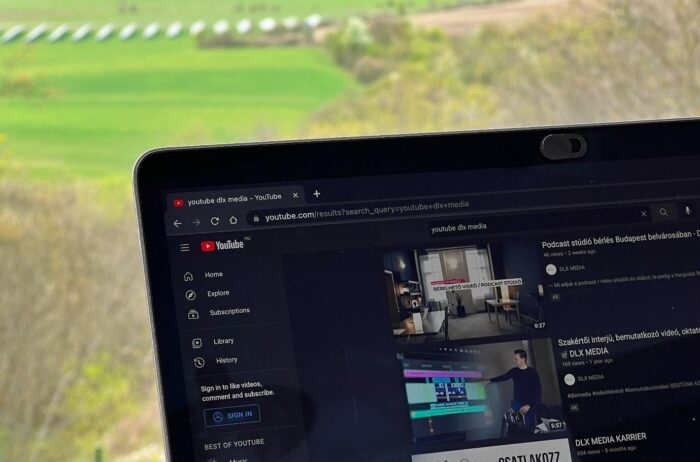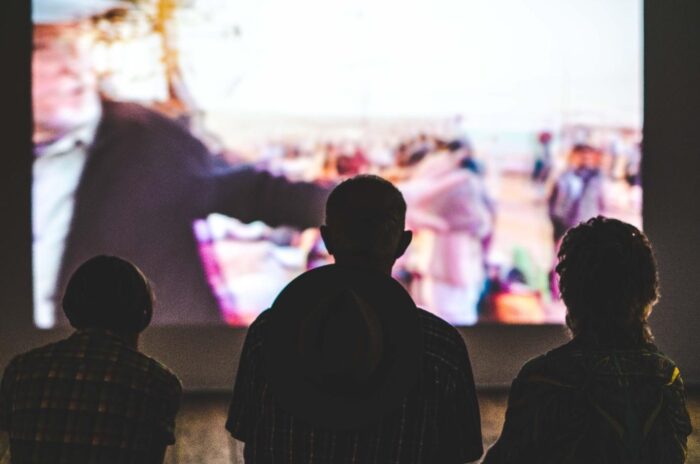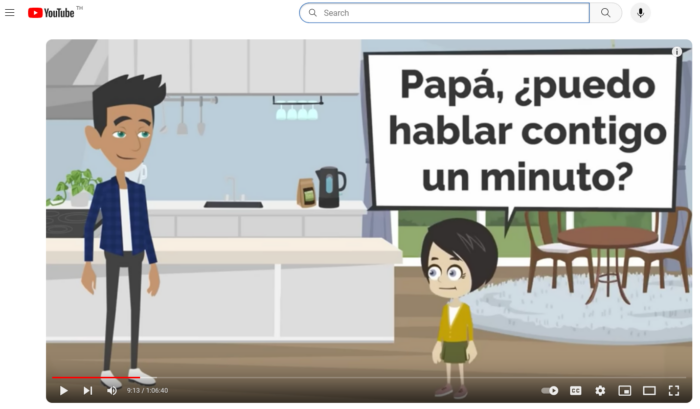6 Active and Passive Ways to Enhance Video Language-Learning
Read other articles:
Back to posts

Learning a foreign language from video is a well-established way to ramp up your learning efforts — especially if you’re trying to master a language.
In past posts, we’ve looked at why video is so effective for learning a language, the types of video to focus on, some tips for learning from video, and some tools that work with video to enhance the language-learning experience.
But when you watch a YouTube video, movie or TV program in the target language, what should you be doing to benefit most from the journey you’re taking?
Should you lean back and hope that you simply “absorb” the language — or work hard to identify the learning points and memorize new phrases?
Let’s look at the main active and passive learning ways to watch videos so that you’ll get the most out of your language-learning experience.
1. Big-picture passive learning

Watching for pleasure and simply sitting back, enjoying the movie or TV show in the language you’re learning (just as you would with any favorite movie) is a surprisingly effective way to acquire language.
Through entertainment, engagement, and taking in the “big picture”, you pick up the language naturally — a little like a child learns by absorbing the things they’re interested in.
This can be an especially effective method for new video material, especially movies and TV series episodes that you find entertaining. Ideally, you can follow what’s going on from body language, gestures, and some grasp of the language — without relying on subtitles in your native language.
Don’t worry too much about vocab, phrases you don’t understand or grammar at this stage. After watching the video passively once or twice (more if you like) for context, you can go back and watch it with one of the active learning methods described below.
2. Learning through immersion and listening
Immersion in the language with native speakers is one of the most effective ways to acquire language. Video can help you do that.
With most foreign language learning methods, great emphasis is placed on speaking and writing (output). However, simply listening or reading (input) can help you acquire language — again, similar to how a child learns.
By soaking in and absorbing the target language from a video that engages you, great strides can be made as you get to grips with the rhythm, tone, pronunciation, and contextual use of the language.
Even switching on the dialogue from a TV show or movie in the background while you’re cooking, cleaning or commuting is thought to have language-acquisition benefits (more exposure to the flow and intonation of the language). That’s just about as passive as learning can get!
3.Passive or active learning with subtitles
The use of video subtitles is essential to language learning from video — but not necessarily in the way you would expect.
The temptation for those without a good grasp of the target language is to turn on subtitles in their native language. This can be counter-productive. Subtitles should be in the target language.
You can learn actively or passively with subtitles. Passive learning helps you link sounds to words in context while more active learning using the “pause and replay” method can help you add new language to your “language library” (see more about this below).
Either way, repetitively watching the same video with subtitles in the target language can help you pick up and reinforce the use of new language.
Video dubbed in your native language may be of little use for learning a foreign language unless you use it to get to grips with the storyline initially during the first “passive” watch.
4.Active learning with “pause and play”

Watching videos with the express intent of learning a language involves a little more intervention from learners.
Viewing “interactively” means you engage with the content, milking it for new elements of the language that you can acquire.
This often works best if you have already watched a video passively and understand what’s happening.
Pausing and replaying the video repetitively can help active learners become more familiar with the use of unfamiliar words, phrases or expressions, improving comprehension and vocabulary and gaining important context for the use of these new phrases.
You can go through the video scene by scene, pausing and replaying line by line if you like, noting any new phrases, expressions or uses of language that you’re not familiar with.
If you’re a beginner, this could involve a lot of pausing and replaying. For those with a moderate or more advanced grasp of the language, try to choose videos that use language just a little more advanced than where you are now. This will ensure that some new language is introduced but you still know what’s going on — and you can milk the content for learning points.
5.Active learning by building a language library

Building a “language library” used to mean taking extensive notes while watching videos and jotting down new vocabulary, idioms, phrases, and interesting expressions in a notebook so that you could refer to it later.
Thankfully, it’s a lot easier now with the help of video learning apps like our free Chrome extension, which helps you automatically save phrases and build a private language library in the cloud. The app uses AI technology to translate from the target language into your native language and explain the meanings behind words and phrases.
Provided the YouTube video you’re watching has subtitles, it works seamlessly and reinforces active learning by enhancing retention and allowing you to track your progress over time.
The app also allows you to repeat a particular saved phrase from the video you’re watching so that you can reinforce pronunciation.
Over time, smart video-learning tools like this can help you build a deeper understanding of your target language.
6. Active learning with repeat and shadowing
Another active learning strategy that some language students like to use is repeating and “shadowing” to learn certain phrases.
With this technique, learners watch a scene or listen to a dialogue, then repeat it aloud, trying to mimic the pronunciation and intonation of the target language. This not only improves speaking skills but also reinforces a learner’s memory of commonly used phrases.
Balancing these methods
Immersing yourself in authentic language content from native speakers is an effective way to take your language acquisition to the next level.
However, the key lies not just in consuming content passively but in incorporating both active and passive learning methods — and getting the balance right for your personal learning preferences.
Even when informally watching YouTube videos, if the primary objective is to learn a foreign language and not mere “entertainment”, you can set up structured study sessions using the video platform and our free language learning app that plugs seamlessly into it.
You might like to allocate time for relaxed, passive exposure to the language as well as focused, active engagement using the methods outlined above. Setting realistic goals for each study session should help you track progress effectively and get the most from your video-learning experience.
Read other articles:
Back to posts
